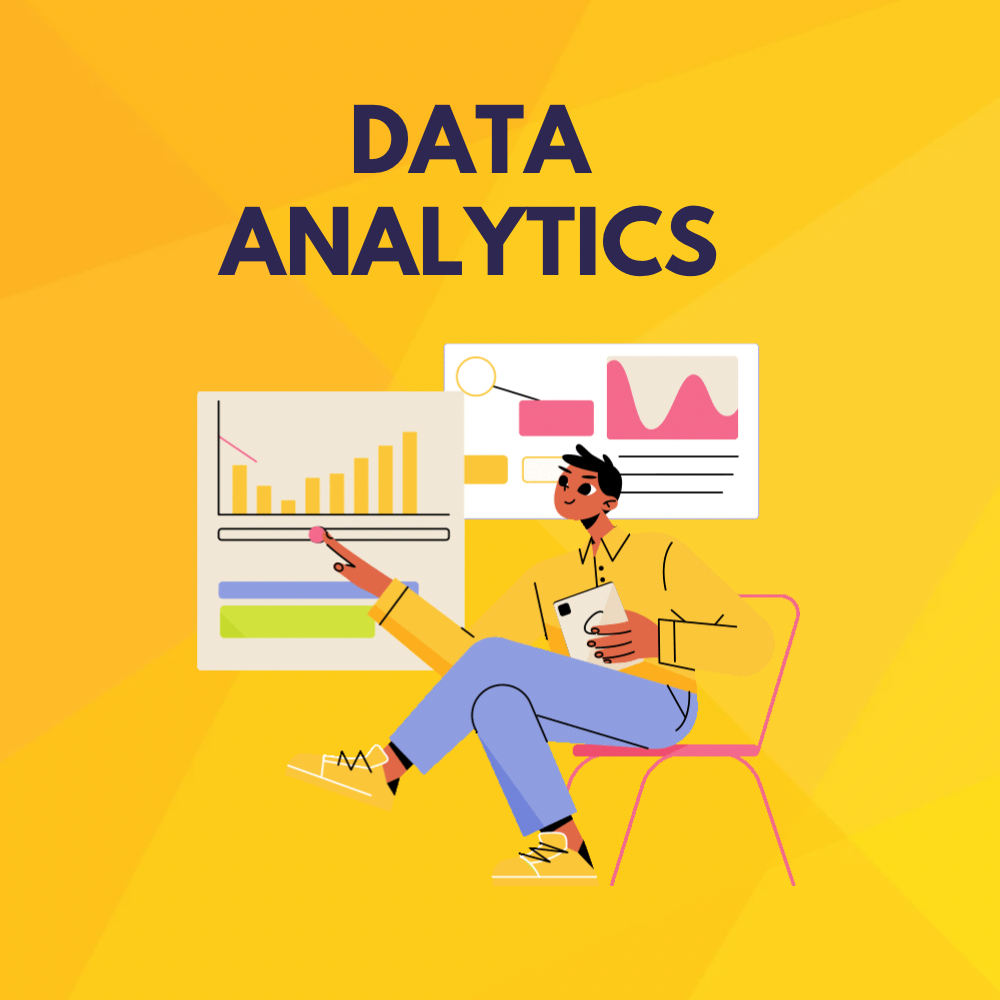Course Overview
Module 1: Python
Embark on your journey into Python programming. Gain a solid foundation in variables, data types, and control flow statements. Explore essential data structures like lists, tuples, sets, dictionaries, and NumPy arrays. Learn data cleaning and preparation techniques using pandas, including importing data, handling missing values, and transforming data. Dive into data analysis and visualization, performing data aggregation, creating visualizations with Matplotlib and Seaborn, and conducting exploratory data analysis (EDA). Develop valuable skills for data manipulation and analysis in Python.
Module 2: SQL
Delve into the world of SQL. Begin with an introduction to basic SQL syntax, table creation, and SELECT statements for data querying. Explore advanced concepts like joins, subqueries, and data filtering and sorting. Dive into data manipulation techniques, including updating, deleting, and inserting records. Discover the power of creating views for efficient data management. Master the essential skills of SQL for data manipulation and retrieval.
Module 3: Excel for Data Analysis
Unlock the power of Excel for data analysis. Start with an introduction to the Excel interface, basic formulae, and data formatting. Learn data manipulation and analysis techniques including filtering, sorting, pivot tables, and charts. Explore advanced features like lookup functions, what-if analysis with scenario manager and solver, and automation using macros. Master Excel’s capabilities for efficient data analysis and decision-making.
Module 4: Data Visualization with Tableau and Power BI
Discover the art of data visualization using Tableau and Power BI. Learn to navigate the interfaces, import data, and create compelling visualizations. Dive into creating various chart types, applying filters and sorting, and combining visualizations into interactive dashboards. Explore advanced features such as calculations, parameters, and integrating with external data sources. Master the skills to effectively communicate data insights using Tableau and Power BI.
Module 5: Statistics for Data Analytics
Dive into the world of statistics for data analytics. Start with an introduction to descriptive and inferential statistics, exploring measures of central tendency, variability, and probability distributions. Learn statistical inference techniques such as hypothesis testing, confidence intervals, and understanding p-values and significance levels. Explore correlation and regression analysis, covering simple and multiple regression, correlation coefficients, and goodness-of-fit measures. Master the fundamental statistical concepts for effective data analysis and interpretation.



There are no reviews yet.